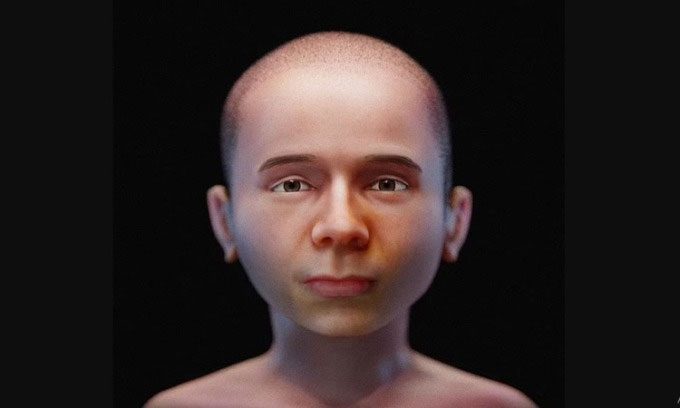Researchers Reveal the Face of a 2,300-Year-Old Egyptian Teen Mummy with Hydrocephalus.
Minirdis was an ancient Egyptian noble who died at the young age of 14. He was the son of a devout family and was destined to inherit the role of his father, Inaros, a priest of the fertility god Min. However, Minirdis died young, and his mummy remained intact in the Akhmim cemetery in Upper Egypt until its discovery in 1925. Led by Cicero Moraes, a Brazilian 3D design expert, scientists recreated Minirdis’s face and diagnosed the teenager with a rare syndrome, Mail reported on November 22.

The face of the Minirdis mummy. (Photo: Cicero Moraes)
According to Moraes and his team, Minirdis suffered from hydrocephalus, a condition that causes the brain to enlarge abnormally. “When we studied the skull volume, we were very impressed with its size. I noticed that the coffin seemed to be designed for an older person than the mummy, but even so, the head took up almost the entire length. As a result, the deceased’s face was turned, otherwise, the coffin lid could not close,” Moraes explained.
A skull is considered to have hydrocephalus if the head circumference is more than 2.5 standard deviations above the average for the individual’s age and sex. In this case, the head circumference and brain volume of the mummy exceed the standard by more than three times.
The portrait of Minirdis was reconstructed using a digital model of the skull, followed by the addition of soft tissue. The process involved data from living individuals, including a group of corresponding age. Additionally, the skull and skin structure of a donor were digitally recreated and altered until they matched Minirdis’s dimensions, revealing the face of the deceased. According to Moraes, it is a youthful and delicate face.
The researchers identified the mummy’s name and his father’s through inscriptions on the coffin. Moraes believes that Minirdis led a materially affluent and spiritually rich life. However, the research team could not definitively determine the cause of Minirdis’s death.
Hydrocephalus can hinder development, affect intelligence, cause seizures, and even lead to paralysis. Currently, the mummy of Minirdis is part of the collection at the Field Museum in Chicago.


















































